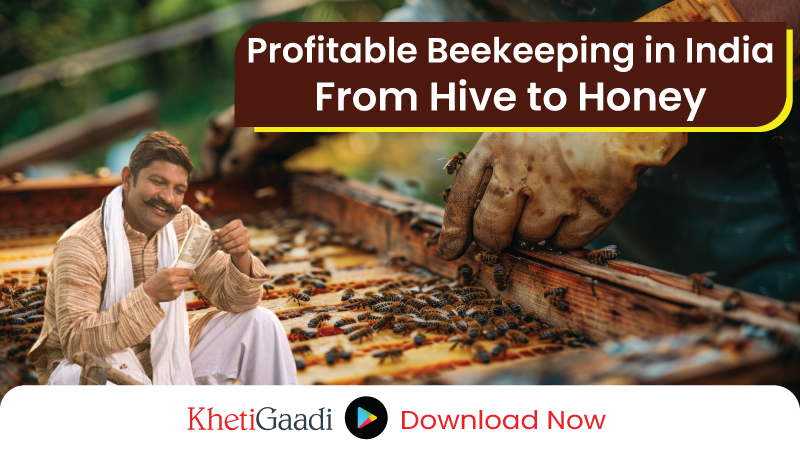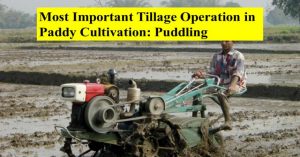Beekeeping, also known as apiculture, is an ancient practice that has evolved into a profitable and environmentally beneficial industry in India. The increasing demand for honey and other bee-related products, coupled with the government’s support for rural entrepreneurship, has made beekeeping an attractive venture for many. In this blog, we’ll provide a comprehensive guide on how to start beekeeping in India, covering everything from understanding different bee species to the financial aspects of this business.
Introduction to Beekeeping in India
Beekeeping involves the maintenance of bee colonies in artificial hives, primarily for the production of honey. In India, beekeeping has a rich history and plays a significant role in agriculture through pollination. The practice not only provides honey but also produces beeswax, royal jelly, propolis, and bee venom, all of which have commercial value. The Indian government, through initiatives like the National Beekeeping and Honey Mission (NBHM), is actively promoting beekeeping as a sustainable and lucrative business.
Understanding Different Bee Species
Before starting beekeeping, it’s essential to understand the different species of bees available in India and their characteristics. The most common species used for commercial beekeeping in India include:
- Apis cerana indica (Indian Honey Bee)
This is a native species and is well adapted to the Indian climate. It is commonly used in traditional beekeeping practices. Apis cerana indica is known for its resilience and ability to thrive in diverse environmental conditions. However, the honey yield from this species is lower compared to others.
- Apis mellifera (Western Honey Bee)
This species is widely used in commercial beekeeping due to its high honey production. Apis mellifera is larger than the Indian honey bee and is more productive, making it a popular choice among professional beekeepers.
- Apis dorsata (Rock Bee)
Apis dorsata is known for its large size and the ability to produce large quantities of honey. However, this species is more aggressive and difficult to manage, making it less suitable for beginners.
- Apis florea (Little Bee)
This is a smaller species that produces less honey, but it is highly adaptable and can thrive in arid regions. It is less commonly used in commercial beekeeping.
How to Select an Ideal Location for Beehives
Choosing the right location for your beehives is crucial for the success of your beekeeping venture. Here are some factors to consider:
Proximity to Flora
Bees need access to flowering plants to collect nectar and pollen. Ideal locations for beehives include orchards, agricultural fields, gardens, and areas with abundant wildflowers. The closer the hives are to these sources, the more productive the bees will be.
Availability of Water
Bees require water for various activities, including cooling the hive and diluting honey. Ensure that there is a reliable water source near your beehive location. You can also provide an artificial water source if necessary.
Protection from Wind and Predators
Place the hives in areas protected from strong winds, which can disrupt bee activity. Additionally, consider the potential threats from predators like bears, wasps, and ants. Installing barriers or placing the hives on raised platforms can help protect them.
Avoid Human and Animal Disturbance
Bees can become aggressive if disturbed frequently. It’s advisable to place the hives away from areas with high human or animal activity. Ensure that the location is quiet and secluded.
Guide for Beginners on Acquiring Healthy Honey Bee Colonies
Starting with healthy bee colonies is essential for successful beekeeping. Here’s how you can acquire and establish your bee colonies:
- Purchasing Bee Colonies
You can purchase bee colonies from established beekeepers or specialized suppliers. Ensure that the bees are healthy and free from diseases. A standard colony includes a queen bee, worker bees, and drones. When starting, it’s advisable to begin with 2-3 colonies and gradually expand as you gain experience.
- Transferring Bees to Your Hives
Once you’ve acquired your bee colonies, you’ll need to transfer them to your prepared hives. This process should be done during early morning or late evening when the bees are less active. Carefully move the bees and the frames they are on into your hives, ensuring that the queen is safely transferred.
- Feeding and Nurturing the Colony
Initially, the bees may require supplemental feeding, especially if the surrounding flora is insufficient or during seasons when flowers are scarce. A sugar-water solution can be provided until the bees establish themselves.
Step-by-Step Guidance on the Honey Harvesting Process
Harvesting honey is one of the most rewarding aspects of beekeeping. Here’s a step-by-step guide to the process:
- Timing the Harvest
Honey should be harvested when the bees have capped the cells with wax, indicating that the honey is ripe and ready for collection. In India, honey harvesting is typically done during the spring and autumn seasons when flowers are abundant.
- Preparation
Wear protective clothing, including a bee suit, gloves, and a veil, to protect yourself from bee stings. Light a bee smoker and use it to calm the bees before opening the hive.
- Removing the Honeycombs
Carefully open the hive and remove the frames containing honeycombs. Use a bee brush to gently sweep away any bees on the combs. Place the honey-filled frames in a covered container to prevent bees from returning to them.
- Extracting the Honey
The extracted honeycombs can be processed in several ways:
- Manual Extraction: Crush the combs to release the honey, then strain it through a fine cloth to remove impurities.
- Honey Extractor: A honey extractor is a mechanical device that spins the frames, using centrifugal force to extract honey without damaging the combs.
- Storing the Honey
Once extracted, the honey should be stored in clean, airtight containers. Keep the honey in a cool, dark place to preserve its quality.
Beekeeping Laws and Regulations in India
Beekeeping in India is regulated by various laws to ensure the safety of both beekeepers and the environment. Some key regulations include:
- Registration
Beekeepers are encouraged to register with the local agricultural or horticultural department. This helps in monitoring bee populations and controlling diseases.
- Pesticide Use
The use of pesticides near beehives is strictly regulated, as many chemicals can be harmful to bees. Beekeepers should coordinate with local farmers to minimize pesticide exposure.
- Export Regulations
India is a significant exporter of honey, and exporters must comply with the standards set by the Agricultural and Processed Food Products Export Development Authority (APEDA). This includes ensuring that honey meets quality and safety standards.
Environmental Impact of Beekeeping
Beekeeping has a positive impact on the environment, contributing to biodiversity and supporting ecosystems. Here are some environmental benefits:
- Pollination
Bees are crucial pollinators, helping in the reproduction of many plants, including crops like fruits, vegetables, and nuts. By maintaining bee colonies, beekeepers support agricultural productivity and biodiversity.
- Sustainability
Beekeeping is a sustainable agricultural practice that requires minimal resources. It does not harm the environment and can be integrated with other farming activities.
- Conservation of Bee Species
Through beekeeping, endangered bee species can be protected and conserved. This is essential for maintaining ecological balance and ensuring food security.
Investment & Earning
Beekeeping is a cost-effective venture with the potential for substantial returns. Here’s an overview of the investment and earning potential:
- Initial Investment
The initial investment for beekeeping includes purchasing bee colonies, hives, protective gear, and tools. On average, the cost to start with 5-10 colonies ranges from INR 30,000 to INR 50,000. If you’re setting up a larger operation, the investment can go up to INR 2-3 lakh, depending on the scale and equipment used.
- Recurring Costs
Recurring costs include feeding the bees, maintaining the hives, and treating diseases. These expenses are relatively low, making beekeeping a cost-effective enterprise.
- Earning Potential
A single hive can produce anywhere from 20 to 40 kg of honey per year. With honey prices ranging from INR 300 to INR 500 per kg, the annual revenue from a single hive can range from INR 6,000 to INR 20,000. Additional income can be generated from selling beeswax, propolis, and other bee-related products.
For example, a beekeeper with 50 hives could potentially earn between INR 3 lakh and INR 10 lakh annually, depending on the quality of honey and market conditions.
Success Stories
Rural Beekeepers in Uttarakhand
A group of farmers in Uttarakhand started beekeeping as an additional source of income. With an initial investment of INR 1.5 lakh, they set up 50 hives and began producing high-quality honey. Within two years, they were able to generate an annual income of INR 8 lakh, allowing them to expand their operations and improve their livelihoods.
Urban Beekeeping in Bangalore
An entrepreneur in Bangalore started urban beekeeping on the rooftop of his apartment building. With just 10 hives, he began producing organic honey, which he sold to local markets and online. The business quickly gained popularity, and within a year, he achieved annual earnings of INR 3 lakh, demonstrating the viability of beekeeping in urban settings.
Conclusion
Beekeeping in India offers a rewarding and profitable opportunity for those interested in agriculture and sustainability. By understanding bee species, selecting the right location, and following best practices, you can start a successful beekeeping venture. The environmental benefits, combined with the potential for significant financial returns, make beekeeping a worthwhile investment.
Reference Links
National Beekeeping and Honey Mission (NBHM)
Central Bee Research and Training Institute (CBRTI)
India Biodiversity Portal Bees of India
Agricultural and Processed Food Products Export Development Authority (APEDA)
Tags




